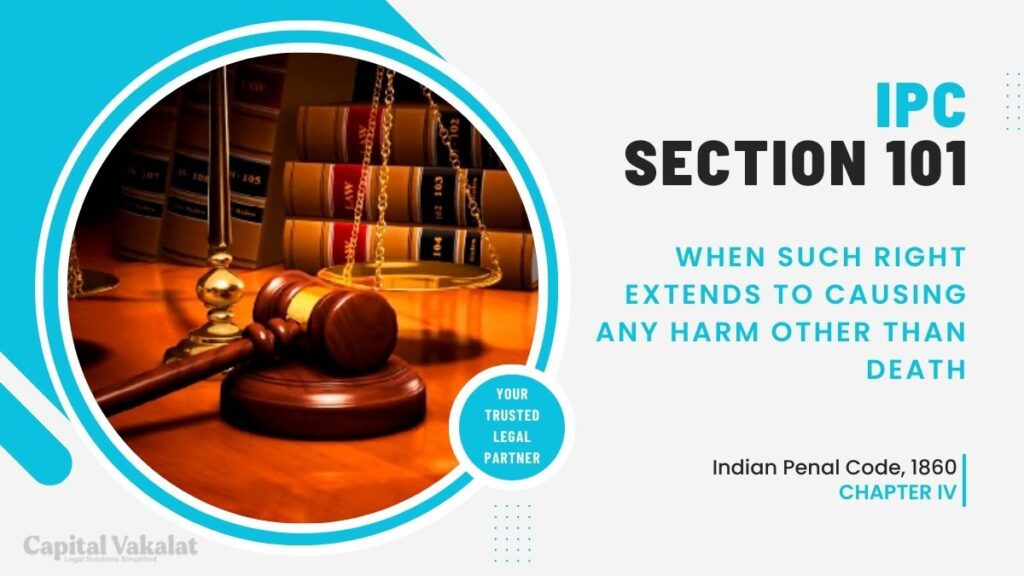In the vast realm of legal frameworks, Section 101 of the Indian Penal Code (IPC) holds a unique position. It deals with the intricate balance between the exercise of one’s rights and the consequences it may have on others, particularly when those actions result in harm.

This article will delve into the depths of Section 101 IPC, exploring its nuances and implications.
Understanding Section 101 IPC
Section 101 of the Indian Penal Code deals with a fundamental aspect of the legal system: the right of a person to defend themselves or others from harm. However, this right is not without limitations. It extends to situations where harm is caused, but death is not the outcome. To comprehend this section fully, it is essential to break it down into its key components.
The Right to Self-Defense
At its core, Section 101 IPC recognizes the right of individuals to defend themselves and others. This is a fundamental principle in any legal system, emphasizing the value placed on human life and security.
Limitations on Self-Defense
While the right to self-defense is vital, it comes with limitations. Section 101 outlines that the right only extends to causing harm other than death. This clause is crucial in preventing excessive use of force in self-defense scenarios.
Interpreting the “Harm Other Than Death”
The phrase “harm other than death” is central to Section 101 IPC. It raises several important questions and considerations, which we will explore below.
Degrees of Harm
One key aspect is the degrees of harm. What constitutes harm other than death? The legal system takes into account various forms of harm, including physical injuries, mental anguish, and damage to property.
Proportional Response
Section 101 also emphasizes the principle of proportional response. In self-defense situations, the harm inflicted must be proportionate to the threat faced. This principle aims to prevent excessive force and unnecessary harm.
Legal Precedents
To gain a better understanding of how Section 101 IPC is applied in practice, it is essential to examine legal precedents and cases where this section has been invoked.
Case Study 1: The Use of Force to Prevent Assault
In a landmark case, the court ruled in favor of a defendant who had used force to prevent a severe assault. The court found that the force used was reasonable and proportionate to the threat faced.
Case Study 2: Property Protection
In another case, a property owner used force to deter trespassers. Section 101 was invoked, and the court found that the harm caused to the trespassers was justifiable under the circumstances.
Contemporary Relevance
In today’s society, where conflicts and confrontations can arise in various settings, Section 101 IPC remains highly relevant. It serves as a legal safeguard, ensuring that individuals can protect themselves and others while preventing excessive harm.
Conclusion
Section 101 IPC is a vital component of India’s legal framework, balancing the right to self-defense with the prevention of unnecessary harm. It underscores the importance of proportional response and serves as a safeguard for individuals in challenging situations.
FAQs
What factors determine whether the harm caused is proportionate to the threat?
The courts consider the nature of the threat, the degree of force used, and the circumstances surrounding the incident to determine proportionality.
Are there any exceptions to the right to self-defense outlined in Section 101 IPC?
While the right to self-defense is fundamental, it is subject to limitations to prevent excessive use of force.
Does Section 101 IPC apply to protecting property as well?
Yes, Section 101 IPC can be invoked when harm is caused to protect property, provided the force used is reasonable and proportionate.
Where can I access the full text of Section 101 IPC?
You can access the full text of Section 101 IPC and other sections of the Indian Penal Code through legal databases or official government websites.